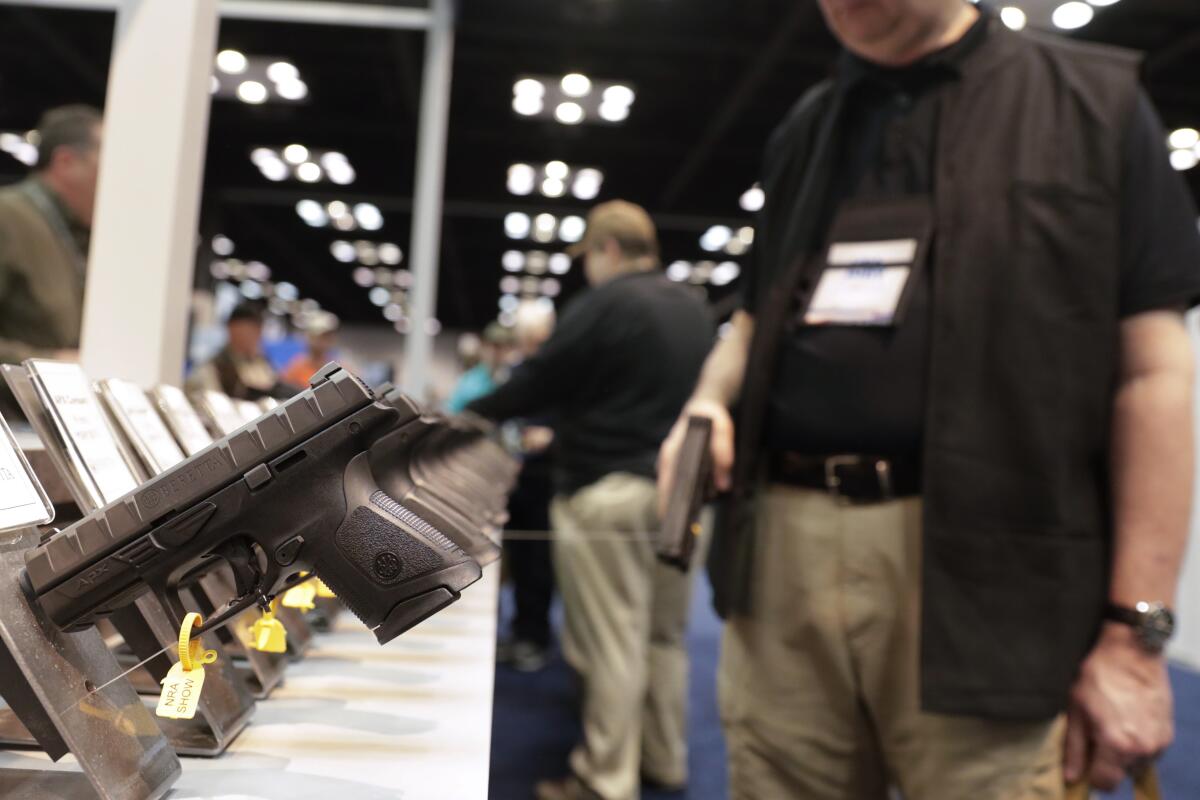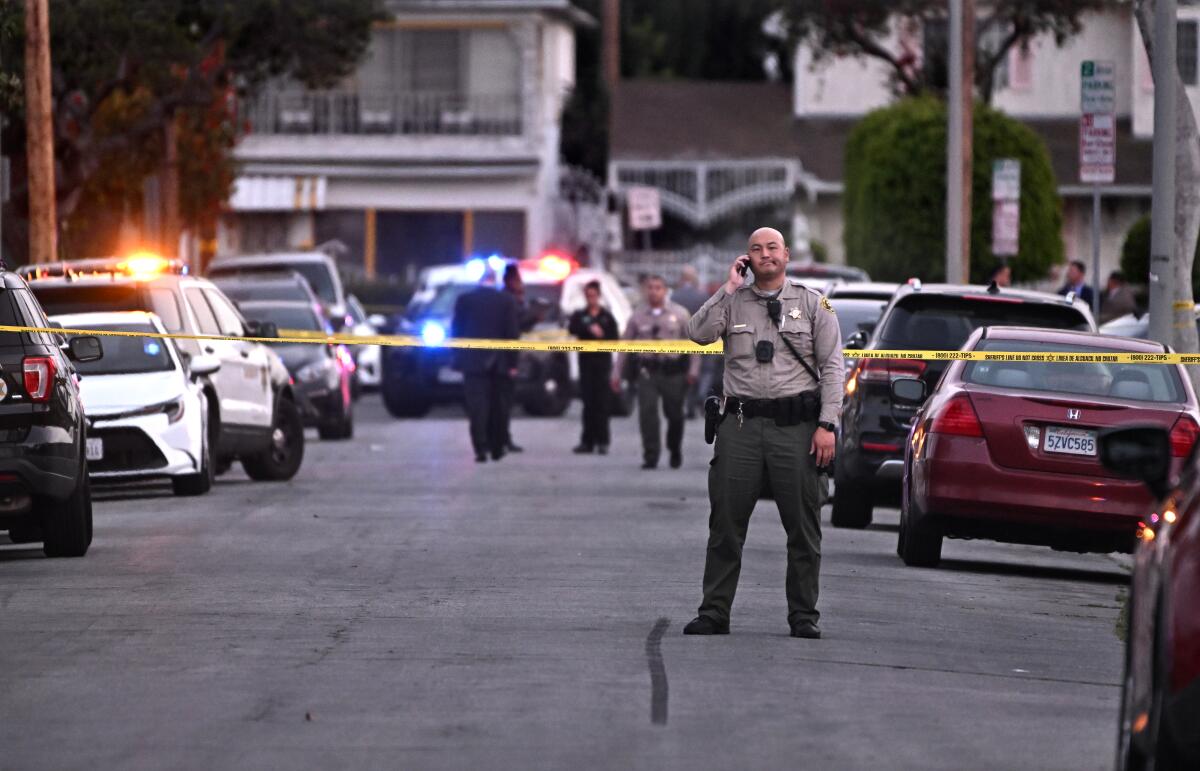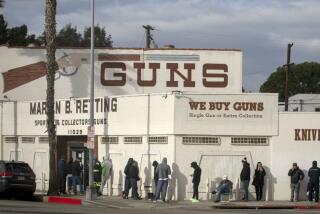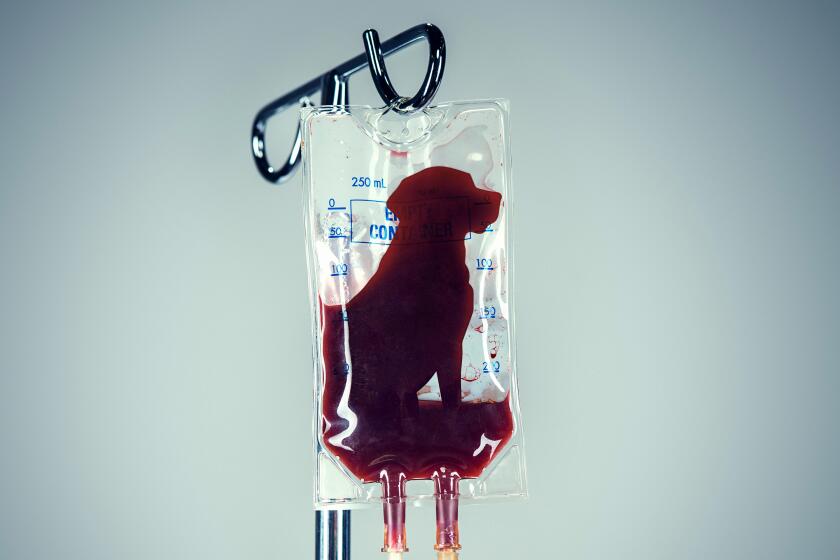Gun ownership data are often limited — and the NRA knows it stands in the way

- Share via
California has long played a pivotal role in the study of gun violence, maintaining a unique repository of detailed information on gun owners that it shares with researchers.
The National Rifle Assn. and other gun rights groups have filed lawsuits challenging that long-established practice. The lawsuits — which come as researchers confront an uptick in gun-related injuries, driven by a surge in homicides — were filed a year after the NRA’s research director acknowledged at a private meeting that the group’s opposition to gathering such data has severely hampered gun violence studies in the United States.
With narrow exceptions, all firearms transactions in California must go through licensed dealers, who relay information on purchasers — including name, address and date of birth — to the California Department of Justice.

For more than 30 years, the DOJ has shared this data with public health researchers, who have used it to try to untangle the connections between gun ownership and homicides, suicides and other violence. They say this baseline information is key to understanding the risks and benefits of having a gun and, ultimately, to reducing injuries and deaths.
“California is special,” said David Studdert, a professor and gun researcher at Stanford Law School who focuses on the intersection of law and public health. “It’s not possible to do this kind of work elsewhere in the country. You need to be at the individual and household level to make the connection between the gun and a violent outcome. You can’t measure what you can’t see.”
In 2021, Gov. Gavin Newsom, a Democrat, signed a law that formalized standing practice and authorized the DOJ to share the data with accredited researchers.
This prompted the NRA and other gun rights groups to file their lawsuits — one in state court and one in federal court — to end the arrangement.
The Second Amendment Foundation and a coalition of California gun rights groups filed the state court case. While five anonymous California residents are plaintiffs in the federal case, the NRA’s main lobbying arm, the Institute for Legislative Action, claims credit for bringing the lawsuit.
The lawsuits claim that the privacy rights of gun owners — already forced to divulge personal information to the state — are further violated when that information is shared with researchers. The suits also argue that the practice increases the risk of buyers’ identities becoming public.
The NRA did not respond to calls or emails seeking comment.
For decades, the NRA has pressured lawmakers to block the collection of ownership data — and denied that its position stifles legitimate firearms research. But in a January 2021 report to board members gathered in Dallas, Josh Savani, the NRA’s director of research and information, acknowledged that the group’s lobbying has created a major obstacle.
“All firearms research suffers from one problem: we do not know how many firearms are in the United States or how they are distributed,” Savani wrote in a brief report titled “Assessing Firearm Research.” “[The] NRA has long supported various federal laws and appropriation riders as well as laws at the state level to prohibit the collection and centralization of firearms records. While these laws are intended to prevent the creation of firearms registries, they also prevent researchers from conducting accurate studies with the number and distribution of firearms as a variable.”
Savani’s comments are likely to prove contentious on an issue fraught with political, legal and public health implications.
Garen Wintemute, a physician and professor at UC Davis who has studied gun violence for four decades, called Savani’s statements “an admission of what the NRA has denied for 25 years.”
Studdert, the Stanford professor, said Savani’s acknowledgement was “shocking but not surprising.” He added that he was “impressed by the astuteness of the observation. In my view, that’s the number one problem with gun violence research in the United States.”
Savani’s report was included in minutes of the January 2021 meeting that were filed last year in a Texas bankruptcy court during the NRA’s unsuccessful attempt to secure Chapter 11 protection. It was given just after the close of 2020, a year when gun-related injuries claimed 45,222 American lives — a record high, representing a 14% increase from 2019 and a 25% increase from 2015. Gun-related injuries were the 13th leading cause of death in 2020, surpassing car crashes by the biggest margin ever recorded.

A homicide surge drove the record number of gun deaths, according to a Pew Research Center review of figures from the Centers for Disease Control and Prevention. The review found that in 2020, nearly 8 in 10 murders were committed with a gun — the highest percentage since at least 1968. Although the number of gun deaths tallied in 2020 was a 43% increase from a decade prior, per capita figures were highest in the 1970s.
With ownership data so hard to come by, researchers who want to identify ways to reduce gun deaths typically rely on surveys and area-wide studies. A major weakness of survey data is that, for several reasons, people don’t always self-report accurately — an obstacle that Savani touched on in his comments. Area-wide studies involve taking a jurisdiction — for instance, a county — and looking for associations between a new policy and outcomes. For example, researchers may try to determine whether accidental gun deaths involving children decrease after a county enacts strict storage requirements. This approach, though, can invite false inferences about individuals based on aggregate group data.
Andrew Morral, a behavioral scientist and director of a RAND Corp. initiative to assess firearms research, said having comprehensive ownership data would make gun violence research “substantially better and more likely to deliver important insights. You need only look at the very valuable research coming out of California.”
Researchers have used the California data to track groups over time and to link gun ownership to criminal records and mortality statistics. Studdert is now leading a study, one of the largest of its kind, that is using more than two decades of the DOJ data to examine gun homicides, suicides and accidents. His group has published five papers, including one in 2020 that found that the firearms suicide rate among male handgun purchasers in California was eight times greater than for non-purchasers.
Wintemute, the emergency physician, is on Studdert’s team and is founding director of the California Firearm Violence Research Center at UC Davis. Wintemute has been a focus of NRA criticism for decades, though last year the group cited a paper he co-authored that found no association between increased firearms sales early in the pandemic and greater gun violence.
One Wintemute study found that Californians with a prior misdemeanor conviction — even one that was nonviolent or did not involve a gun — who became handgun owners were five times as likely to commit a violent or firearms offense than purchasers with no such convictions.
Studdert and Wintemute said they are unaware of any other large state that collects information on all firearms sales and shares this data with researchers. Gun rights activists have railed against California’s amassing such data and researchers’ access to it for years.
In a court filing, the state contends that fear of identification is overblown and describes a protocol that requires research applicants to apply for access, pass a background check and demonstrate that they have strict data-handling procedures in place.
“In over 30 years of data being provided to researchers,” the filing states, “there has never been a data breach, let alone a public disclosure.”
The NRA has long denied being an impediment to research.
“In the wake of the tragedy in Parkland, Fla., the media are claiming that the NRA and our supporters in Congress are opposed to government-funded research on criminal violence perpetrated with firearms,” said a 2018 column by Chris Cox, at the time the director of the group’s lobbying arm. “Nothing could be further from the truth. We, along with a majority of Americans, believe that research is important in identifying the root causes of violence.”
The most well-known case of the NRA putting a brake on firearms research involves what’s known as the Dickey Amendment. In 1996, then-U.S. Representative Jay Dickey of Arkansas, an NRA ally, inserted a rider in a budget bill that, while not being an outright ban on research, barred funding work that could “be used to advocate or promote gun control.”
With the aid of allied politicians, the NRA has kept the amendment and related riders in place. Partly as a result, the study of gun-related mortality has been significantly underfunded relative to that of other leading causes of death. Dickey would come to regret his role, writing in a 2015 letter, “Research could have been continued into gun violence without infringing on the rights of gun owners, in the same fashion that the highway industry continued its research without eliminating the automobile.”
When there are calls for increased study, the NRA has been quick to attack. In 2013, after the National Academy of Sciences issued a report that argued for better gun violence research, NRA Chief Executive Wayne LaPierre published a column blasting the work and what he described as the Obama administration’s “junk science agenda.”
Although the authors had suggested removing identifying information on gun owners from existing federal government data and using it for research purposes, LaPierre wrote that the “most dangerous” element of the report was “a demand for the collection of personal, private information on all law-abiding firearm owners and our guns.”
In their lawsuits against California, the gun advocates invoke the rights of “law-abiding” owners. A central tenet of the gun movement holds that widespread, lawful firearms ownership is a net benefit to society. They argue that those truly concerned about firearms violence should leave legal gun owners alone and focus on the real problem: criminals packing illegal guns.
Only a small fraction of guns sold in this country are ever used in a homicide or suicide. There is consensus that most gun crime is committed with illegally possessed firearms; however, research to determine what percentage is limited. Researchers have consistently found that a gun in the home is associated with greater risk of suicide and homicide, but the frequency with which guns are used in self-defense is hotly disputed.
“There are instances where a gun is used to defend the home,” Studdert said. “How often? We just don’t know.”
Savani’s report makes no mention of addressing such questions. He described the work of his research and information unit as primarily focused on “informing” NRA advocacy by “using arguments and messaging that resonate with the largest number of Americans.”
Van Sant writes for the Trace, a nonprofit newsroom covering gun violence in America.
More to Read
Sign up for Essential California
The most important California stories and recommendations in your inbox every morning.
You may occasionally receive promotional content from the Los Angeles Times.










